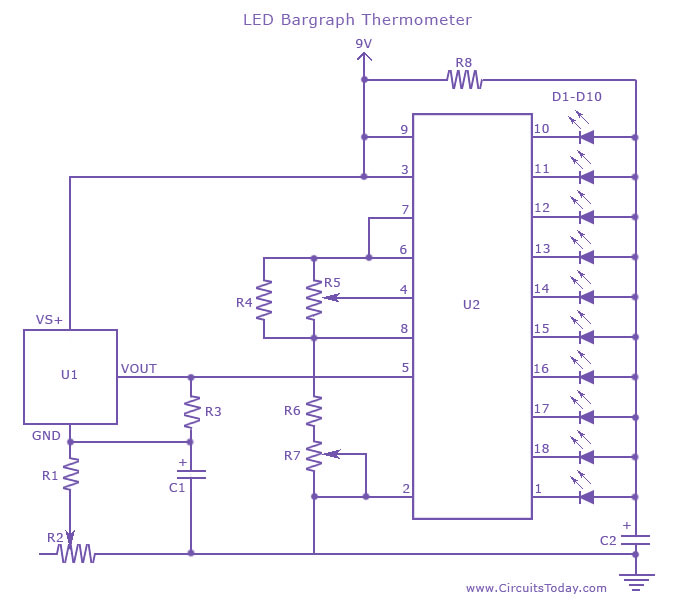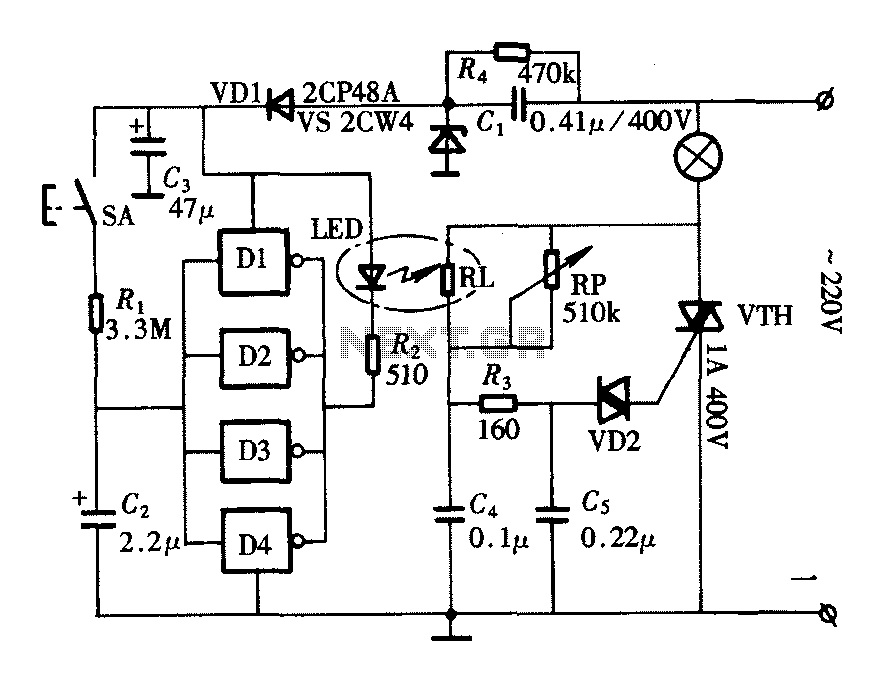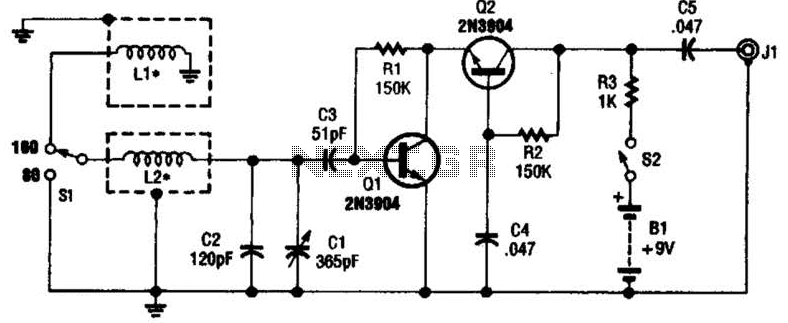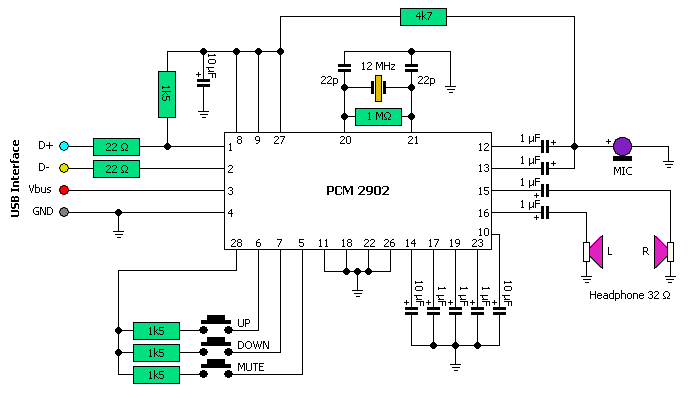
metronome circuit
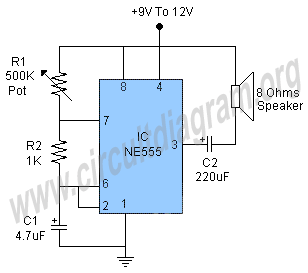
The figure illustrates a simple project schematic of a metronome. A metronome is a device utilized by musicians to produce continuous beats through a speaker.
The metronome circuit typically consists of several key components that work together to generate a stable rhythm. At the core of the metronome is an astable multivibrator, often implemented using a 555 timer IC. This configuration allows the circuit to oscillate between high and low states, producing a square wave output. The frequency of this square wave can be adjusted using two resistors and a capacitor, providing musicians with the ability to set the tempo of the beats.
In the schematic, the output of the 555 timer is connected to a transistor, which acts as a switch to drive a small speaker or piezo buzzer. This transistor amplifies the current from the timer output, allowing the speaker to produce audible sound. A resistor may also be included in series with the speaker to limit the current and protect the components from damage.
Power for the circuit can be supplied from a standard battery or DC power supply, with appropriate voltage regulation if necessary. Additional features may include a variable resistor (potentiometer) for fine-tuning the tempo, and LED indicators to visually represent the beat.
Overall, this metronome circuit provides a straightforward and effective solution for musicians seeking to maintain their timing during practice and performance.The figure shows an easy project / schematic of a metronome. A metronome is a device that is used by musicians. The circuit produces continues beats in the speaker.. 🔗 External reference
The metronome circuit typically consists of several key components that work together to generate a stable rhythm. At the core of the metronome is an astable multivibrator, often implemented using a 555 timer IC. This configuration allows the circuit to oscillate between high and low states, producing a square wave output. The frequency of this square wave can be adjusted using two resistors and a capacitor, providing musicians with the ability to set the tempo of the beats.
In the schematic, the output of the 555 timer is connected to a transistor, which acts as a switch to drive a small speaker or piezo buzzer. This transistor amplifies the current from the timer output, allowing the speaker to produce audible sound. A resistor may also be included in series with the speaker to limit the current and protect the components from damage.
Power for the circuit can be supplied from a standard battery or DC power supply, with appropriate voltage regulation if necessary. Additional features may include a variable resistor (potentiometer) for fine-tuning the tempo, and LED indicators to visually represent the beat.
Overall, this metronome circuit provides a straightforward and effective solution for musicians seeking to maintain their timing during practice and performance.The figure shows an easy project / schematic of a metronome. A metronome is a device that is used by musicians. The circuit produces continues beats in the speaker.. 🔗 External reference


